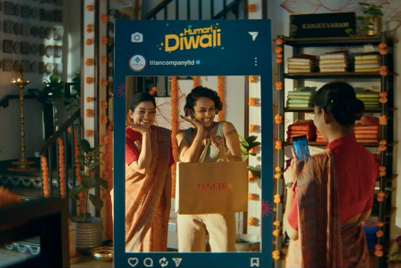
No shortlist in Cannes 2010 and only four shortlists at Spikes 2010. While almost every other category offered Indian agencies plenty of reason to smile during different advertising festivals over the year gone by, India has so farfailed to leave its mark on the film craft category.
Even with the poor performances across the awards, Sumanto Chattopadhyay, executive creative director, South Asia, Ogilvy & Mather, believes that performance across the category has improved within the nation. He says, “I think that on the one hand crafting in Indian film making has come a long way as we are way better than what we used to be. But having said that, we can’t compare our work to the work being created internationally. The reason for that is, until recently we did not have access to foreign filmmakers as we couldn’t afford them. Recession helped us out, as decent foreign filmmakers were willing to work at our budgets.”
“To do well in the Film Craft category, a story idea is imperative. Any commercial needs to have a good idea which needs to be put across in the most exciting way. The idea is what lends quality to the advertisement. To get the idea across in an entertaining manner, aspects like the sound, video, casting, editing and music need to be in order too”, explains Ravi Deshpande, chairman and chief creative officer, Contract Advertising.
According to Prasoon Pandey, director, Corcoise Films, who is also on the Cannes 2011 film craft jury, Indian film makers can generate ideas, but because of a race against time, they don’t have the time to execute them. He says, “In India we have some brilliant ideas in commercials but we just aren’t spending enough time and effort on trying to execute them. Typically we are giving directors only 25 to 30 days to deliver a film from the time we first discuss the film with them. Whereas, in the West, the directors are getting an average of three months to work on a film.” Vikram Kalra, executive producer and founding partner, Good Morning Films, agrees with Pandey and says, “ What we could do to improve our performance across the category is to give more time for planning and producing TVCs in India. This is one area that is often undermined and can often be the undoing of a good film even when the budget is good.”
Often while discussing our problems in this category, budgets (the lack of them) are cited as the main problem. Agnello Dias, chief creative officer, Taproot India says, “Bigger budgets may not lead to better films but they certainly lead to better film craft.”
With no single reason pinpointed for the performance in the award category, Chattopadhyay suggests a foray into the international market could be the answer for better films. He says, “Indian film directors should work in the international market. This will show them exactly where they stand and will force them to re-evaluate themselves. Some will make the cut, some won’t. Whoever they are wherever they stand, they’ll be forced to improve. The work environment will force them to up their game and will help them come up with significantly better ideas.”

Producer
Vikram Kalra, executive producer and founding partner, Good Morning Films
“A new and better approach to making films would be to train, equip and pay our crew in India so that they can reach the levels of professionalism achieved by their highly skilled international counterparts. This of course is much easier said than done given the socio-economic structure and the perennial problem of our burgeoning population. The more realistic change that we could aim for is to give more time for planning and producing TVCs in India.”

Creative
Ravi Deshpande, chairman and chief creative officer, Contract Advertising
“India has won a few awards, but still has a long way to go to consistently perform well in this category. One aspect amongst correct sound, video, casting, editing or music goes missing in most of our advertisements and that makes us lose awards, which we could have won with our ideas put forward. What holds our directors and producers back is also the budget. The budgets they work with are sometimes 1/10th the budget filmmakers from other countries work with. On the other hand, even with a significantly generous budget, we miss out on the awards because we are not well prepared.”

Creative
Agnello Dias, chief creative officer, Taproot India
“To put things in perspective, film craft entries from India are around 1/100th of the regular advertising entries. This obviously reflects in the results. We can make a start by making more entries in the category. I personally think our film craft today is strong, very strong, much stronger than it was a decade ago.”

Creative
Sumanto Chattopadhyay, executive creative director, South Asia, Ogilvy & Mather
“Better budgets definitely lead to better films. One part of better crafting is how much money you are able to spend. For example, the art department won’t be able to afford the kind of technology required if the budget provided is not sufficient. But then if you look at Nirvana Films, they started off with a small budget but still made the work shine through. So along with the money, the talent is very important too. With the same amount of money a talented guy person make his work look a 1000 times better.”

Director
Prasoon Pandey, director, Corcoise Films
“Better budgets can never guarantee better films but when judiously spent, better budgets can help achieve particular aspects of cinema like – locations, casting, certain lenses and most importantly experimentation. I think because of tight budgets we are not experimenting and innovating enough. We are only attempting what we know has been tried successfully elsewhere.”


.jpg&h=334&w=500&q=100&v=20250320&c=1)

.jpg&h=334&w=500&q=100&v=20250320&c=1)

.jpg&h=334&w=500&q=100&v=20250320&c=1)


.jpg&h=334&w=500&q=100&v=20250320&c=1)





.jpg&h=268&w=401&q=100&v=20250320&c=1)

.jpg&h=268&w=401&q=100&v=20250320&c=1)
.jpg&h=268&w=401&q=100&v=20250320&c=1)
.jpg&h=268&w=401&q=100&v=20250320&c=1)
